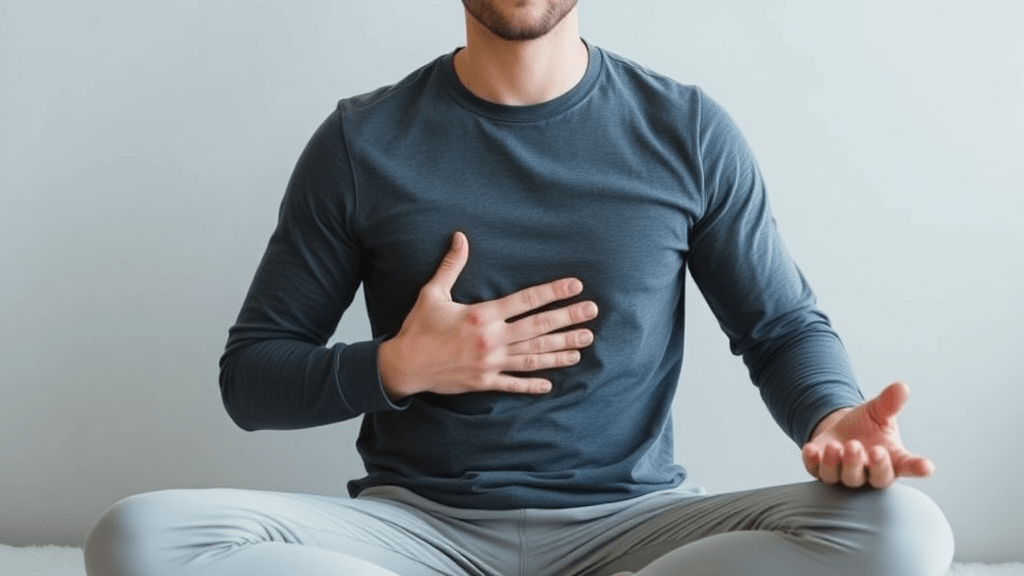Top 10 Stress Relief Techniques You Need to Know to Thrive
Stress is a normal part of life, but when it becomes too much, it can harm your physical and mental health. Learning how to manage stress is important for staying healthy. This article talks about the top 10 stress relief techniques that can help you handle stress better.
Key Takeaways
- Stress relief techniques can help you deal with anxiety and improve your well-being.
- Guided imagery, meditation, and progressive muscle relaxation help you relax and reduce stress.
- Deep breathing exercises and physical activity, like going for a walk, calm your nervous system.
- Hugs, aromatherapy, and creative activities can lift your mood and relieve tension.
- Eating healthy, using stress relief supplements, and getting enough sleep are important for reducing stress in the long run.
- Building resilience involves practicing positive self-talk, gratitude, and having social support.
- Managing time well, getting rid of stressors, and asking for help when needed are good ways to reduce stress.
Top 10 Stress Relief Techniques That Work
Stress can show up in many ways, like physical tension, feeling overwhelmed, or being anxious. Luckily, there are many ways to manage stress and feel better. Here are some of the best techniques:
1. Guided Imagery: Escaping Stress with Your Imagination

If you’re a beginner looking to reduce stress at home, check out our home workout routine for beginners.
How to Practice Guided Imagery
According to Elizabeth Scott, PhD, you can practice guided imagery by closing your eyes and imagining yourself in a peaceful place, like a beach or a forest. Use your senses: smell the ocean, feel the sun, hear the waves, or see the colors of a meadow. You can also listen to a recording that guides you through this exercise.
Benefits of Guided Imagery
- Reduces stress hormones: Visualization helps relax your nervous system and lowers stress hormones like cortisol.
- Promotes relaxation: It helps you relax both physically and mentally by distracting you from worries.
- Improves sleep quality: It helps you calm down, making it easier to fall asleep and sleep better.
- Enhances coping skills: Guided imagery can help you become more resilient and better handle tough situations.
- Boosts mood: It can reduce anxiety and depression by creating a sense of well-being.
Types of Imagery
- Nature imagery: Imagine calming natural places, like forests or beaches.
- Body scan imagery: Focus on specific body parts and imagine them relaxing.
- Healing imagery: Imagine your body healing, which can help both physically and mentally.
- Confidence imagery: Picture yourself succeeding in a tough situation to build confidence.
2. Meditation: Finding Calm in the Present
To learn more about different ways to meditate, you can explore our guide on mindfulness exercises.
Types of Meditation
Elizabeth Scott, PhD, explains that there are many types of meditation, each with a unique approach:
- Mindfulness meditation: Focus on the present moment and notice your thoughts and sensations without judgment.
- Focused meditation: Focus on one thing, like your breath or a repeated word.
- Transcendental meditation: Use a specific word or phrase to reach deep relaxation.
- Walking meditation: Pay attention to how your body feels as you walk.
- Loving-kindness meditation: Focus on feelings of love and kindness for yourself and others.
Benefits of Meditation
- Reduces stress and anxiety: Meditation calms the nervous system and lowers stress hormones.
- Improves focus: By staying present, meditation helps you concentrate better.
- Increases emotional control: Meditation helps you understand and manage your emotions more easily.
- Increases self-awareness: Meditation helps you understand your thoughts and feelings better.
- Better sleep: Meditation helps relax your body and mind, making it easier to sleep well.

How to Start Meditating
Elizabeth Scott, PhD, suggests starting with short sessions of 5 to 10 minutes and increasing the time as you get comfortable. Find a quiet space to sit or lie down, and focus on your breath. When your mind wanders, gently bring your focus back to your breath. You can also add mindfulness to daily activities like eating or walking.
Tips for Adding Mindfulness to Daily Life
You don’t need to do formal meditation to be mindful. Here are some ways to add mindfulness to your daily routine:
- Mindful eating: Pay attention to the taste, texture, and smell of your food.
- Mindful walking: Notice how your feet feel when they touch the ground and how your body moves.
- Mindful breathing: Take a moment during the day to take slow, deep breaths and focus on them.
3. Progressive Muscle Relaxation: Letting Go of Physical Tension
For more tips on effective stress relief techniques, read our detailed guide on stress relief.
Step-by-Step Guide
Elizabeth Scott, PhD, suggests the following steps for progressive muscle relaxation:
- Take a few deep breaths to calm down.
- Start with your forehead, tense the muscles for 5-7 seconds, then relax.
- Focus on how your muscles feel when you relax.
- Move to the next muscle group, like your jaw or shoulders, and repeat.
- Continue through your whole body until you’ve relaxed all your muscles.

Benefits and How It Works
- Reduces muscle tension: By tensing and then relaxing muscles, you can reduce physical tension and stiffness.
- Calms the mind: Relaxing your body also helps calm your mind.
- Improves sleep quality: Relaxing muscles before bed helps you sleep better.
- Reduces stress and anxiety: Managing physical tension can lower stress and anxiety levels.
4. Deep Breathing Techniques: Calming Yourself with Breath
If you want more guidance on staying motivated for stress management, visit our article on motivating yourself to achieve your goals.
Types of Breathing Exercises
Elizabeth Scott, PhD, suggests trying different breathing exercises to see what works best for you:
- Belly breathing: Breathe in deeply through your nose, letting your belly expand. Breathe out slowly through your mouth.
- 4-7-8 breathing: Breathe in for 4 seconds, hold for 7 seconds, then breathe out for 8 seconds.
- Alternate nostril breathing: Use your thumb and finger to take turns breathing in and out through each nostril.
How Deep Breathing Reduces Stress

Deep breathing helps calm your nervous system, especially the part that controls things like your heart rate. When you breathe deeply, it affects the vagus nerve, which helps relax your body and lowers stress hormones.
When and Where to Practice
Deep breathing can be done anywhere, anytime. Whether you’re in traffic, feeling stressed at work, or trying to sleep, a few minutes of deep breathing can help you relax.
5. Going for a Walk: Nature’s Stress Reliever
If you prefer working out at home, take a look at our comprehensive home workouts guide.
How Exercise Helps Reduce Stress
Elizabeth Scott, PhD, and the Mayo Clinic both say that exercise is one of the best ways to manage stress. It helps lower stress hormones, improve sleep, and release endorphins – chemicals that make you feel good.
Benefits of Physical Activity
- Boosts mood: Exercise releases chemicals that make you feel happier and less anxious.
- Improves sleep: Physical activity helps you sleep better at night.
- Increases energy: Exercise can help boost your energy levels.
- Reduces anxiety: It helps you feel less anxious.
- Helps your brain: Exercise can improve focus and memory.
- Strengthens your body: It helps build stronger muscles and a healthier heart.
Types of Walks to Help with Stress

- Nature walks: Spending time in nature can reduce stress and improve your mood.
- Walking meditation: Walking while focusing on the present moment can be calming.
- Power walks: Walking fast can lift your mood and release endorphins.
- Social walks: Walking with friends or family can help you feel less alone and boost your mood.
6. Hugs: The Power of Physical Touch
Hugs are one of the easiest ways to reduce stress. When you hug someone, your body releases oxytocin, a hormone that helps you feel relaxed and happy.
The Science Behind Hugs
Elizabeth Scott, PhD, says that hugs release oxytocin, which makes you feel loved and relaxed. Hugs also help lower blood pressure and reduce stress hormones.
The Importance of Social Connection
Building strong social connections is key for well-being. Learn more in our guide on strong social connections.
7. Aromatherapy: Using Essential Oils to Relax
Aromatherapy uses essential oils from plants to help you relax and reduce stress. These oils can affect the part of your brain that deals with emotions.
How Essential Oils Help Mood
Some scents can change brain activity and affect your mood, helping you relax and reduce stress. For example, lavender oil is thought to help improve sleep and reduce anxiety.
Ways to Use Aromatherapy
- Diffusers: Use diffusers to spread essential oils in the air.
- Topical application: Apply diluted essential oils to your skin.
- Inhalers: Use personal inhalers to breathe in the oils.
- Massage: Use essential oils during a massage.
- Bath products: Use bath products that have essential oils in them.
8. Creativity: Expressing Yourself to Relieve Stress
Doing creative activities is a fun way to reduce stress. Creative activities help you express emotions and thoughts in a healthy way.
Creative Outlets for Stress Relief
Elizabeth Scott, PhD, suggests different creative activities for stress relief:
- Drawing and painting: Use colors to express your emotions.
- Coloring: Focus on coloring patterns, which can be calming.
- Writing: Journaling, poetry, or creative writing can help you release emotions.
- Music: Playing an instrument or singing can be a way to express yourself.
- Crafting: Activities like knitting, sewing, or woodworking can be very calming.
Benefits of Artistic Expression
- Reduces stress: Creative activities distract you from stress and help you relax.
- Boosts mood: Creating something can make you feel good and proud of yourself.
- Helps express emotions: Creativity gives you a healthy way to share how you feel.
- Improves thinking skills: Creating art can challenge your brain and help with problem-solving.
9. Healthy Diet: Eating Right for Your Mental Well-being
Eating a plant-based diet can also help manage stress. Check out our guide on vegan nutrition and its health benefits.
Foods and Nutrients for Stress Management
Elizabeth Scott, PhD, recommends eating foods that provide important nutrients:
- Fruits and vegetables: Rich in vitamins and antioxidants, like vitamin C, which can help manage stress.
- Whole grains: Provide steady energy with complex carbohydrates.
- Lean protein: Helps brain function and provides nutrients needed for mood regulation.
- Omega-3 fatty acids: Found in fish and flaxseeds, these can help reduce stress and improve mood.
- Avocados: Provide healthy fats and nutrients for brain function.
Avoiding Unhealthy Eating Habits
To stay on track with your goals and reduce stress effectively, read our article on staying motivated to achieve long-term goals.




